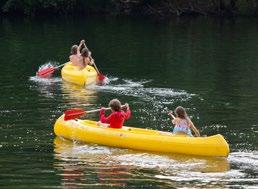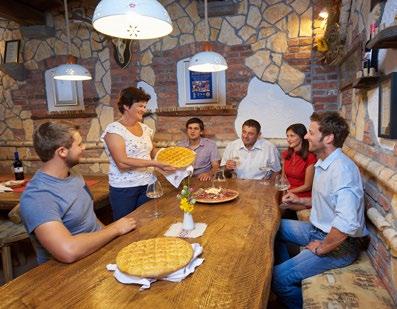
1 minute read
Kolpa – feel the river
In 2010, the European Commission launched a selection of destinations of excellenceon the topic Aquatic Tourism. This was perfect for Slovenia, where the country’s abundance of waters and its coexistence with waters is strongly emphasised in the development of tourism. Therefore, the preservation of water wealth is among the fundamental principles of our developmental sustainability. That year the winning destination in Slovenia included all regions where flows the Kolpa, a river which forms the border between Slovenia and Croatia. It is a biologically very diverse area: from rapids, canyons and dams to the calm current of an extremely clean river, which in summer is very pleasant for swimming. On its 113-kilometre long path, the river runs across numerous natural treasures and brings closer our heritage of mythical heroes and legendary creatures, people who are famous for their typical hospitality, and various cultures.
Variety of experiences
EDEN ____ 14 should also seek out those special individuals who still know how to weave cloth on the loom, and the makers of Bela Krajina embroidery, who help shape the heritage of this typical Pannonian culture.

KOLPA
info@ric-belakrajina.si www.kolpariver.eu

Where lambs and piglets are roasted on a spit
Roast lambs and piglets on a spit are the main characteristic food of the area by the River Kolpa. Bees in the vast forests collect the Kočevje forest honey, which is protected with the EU geographical indication. A flat cake belokranjska pogača also has this indication and together with belokranjska povitica and prosta povitica it is a common dish at receptions and is offered as an expression of hospitality. In the area of Kostel a tasty stew or čušpajz is made as well as an excellent kostelska rakíja, a local type of brandy. At Easter time kostelski želodac is typically prepared, and is also becoming increasingly common on days other than those of Easter. A similar dish in the Črnomelj area is a filling called nádev.











